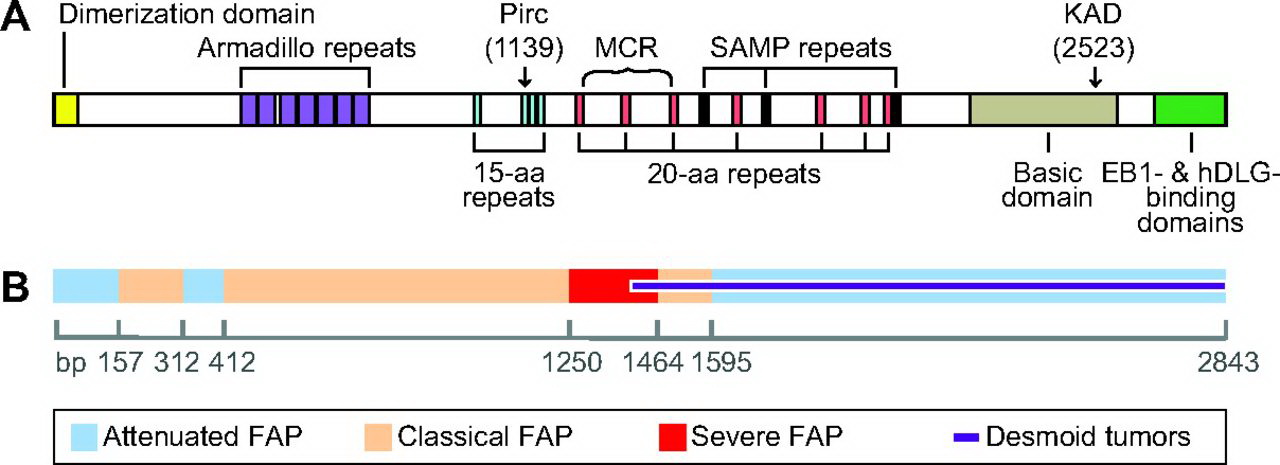APC Gene in FAP


Comments:
Adenomatous Polyposis Coli (APC) gene is a tumor suppressor gene on 5q22.2 which downregulates growth-promoting signaling pathways. It encodes a large 300 kDa protein composed of 2844 amino acids. The large size of the gene accounts for the high frequency of new mutations. Many of the mutations create a stop codon resulting in a non-functional truncated protein. The germline mutations are scattered throughout the 5’ half of the gene. The somatic mutations in APC gene tend to occur near the center of the gene in a region called mutation cluster region. APC protein: The APC protein has a many functional domains through which it participates in a number of critical processes involving colonic epithelial cells, including cell proliferation, cell fate, adhesion, cell polarity, migration, differentiation, and chromosomal aggregation. Oligomerization: The proximal portion of APC permits oligomerization as well as interaction with proteins that regulate actin cytoskeleton. This function plays a role in cell shape, polarity, and cell migration. WNT-β-catenin signaling pathway: WNT-β-catenin pathway is a group of highly conserved signal transduction pathways that play a major role during embryonic development as well as in carcinogenesis. The embryonic processes it controls include body axis patterning, cell fate specification, cell proliferation and cell migration. APC is a negative regulator of this signaling pathway. APC protein regulates stability and cellular localization of β-catenin via β-catenin-binding domain (15-aa repeats) and β-catenin-degradation domain (20-aa repeats). Further explanation of this pathway is dealt with in the next image. Microtubule association: The carboxy terminus of APC protein contains a basic domain that regulates microtubule association and chromosomal aggregation. This ensures that right number of chromosomes go to each daughter cell during cell division. Truncated APC protein loses this region, thereby causing abnormal chromosomal aggregation during cell division and chromosomal instability. Image source: Amy A. Irving et al. The utility of Apc-mutant rats in modeling human colon cancer. Disease Models & Mechanisms 2014 7: 1215-1225.; Used under Creative Commons License 4.0



